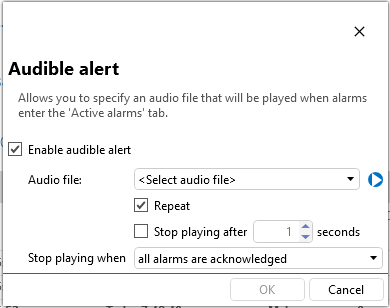Hi, a user has the following use case that is currently supported on their existing fault management system. They are transitioning to DataMiner and phasing out their existing system and would like to understand if it is possible to implement the same behavior:
Use case to support:
(1) An alarm is raised at a particular severity level that is not 'Critical' (e.g.: Warning/Minor/Major).
(2) If the alarm is not acknowledged after a configurable period (e.g.: 60s, 1800s, 3600s) then the alarm is automatically increased to a higher severity without additional input from the device (the data value that triggered the initial alarm does not change). So DataMiner keeps track of the time-elapsed and also whether an alarm is acknowledged and increases the severity if conditions are met.
Attempting to solve this using hysteresis comes to mind. However, the problem that hysteresis solves is fundamentally different. Its purpose is to prevent alarm from being registered or escalated immediately when there is a change in the data value that triggers the alarm (i.e.: prevents alarm flapping). Important to note that a change in data value polled/reported from the device plays a part here while in the use case above, there is none.
Any advice on how to handle the use case we are trying to solve is welcome.
Hi Bing,
I was just wondering if the raise of severity is necessary as I uderstand it, the raise of the severity is used to draw the attention of the user to the alarm.
Something you could consider is using an audible alert in the alarmconsole:

When an alarm is generated an audible alert is played until the alarm is acknowledged.
Is this something you can use?
Hi Michael. I was not aware of this feature. Thanks for bringing it to my attention. It is an interesting capability but I’m afraid it will likely not be a satisfactory solution to the use case.